THE IMPORTANCE OF THE STUDY OF SPRITES IN BRAZIL AND THE WORLD
Since the dawn of mankind we feel intrigued by how solar and extra-terrestrial energy sources affect our planet. The process by which these energy fluxes interact with the Earth's magnetic field, affecting the outermost layer of the planet, the magnetosphere, and is transferred "downwards" to the Ionosphere, and consequently to the lower neutral atmospheric layers, have captivated researchers for several decades and have become well-established research areas.
In the 60s, the first "upwards" transport mechanism of the energy produced in the lower atmospheric layer, the Troposphere, was discovered in the form of gravity waves. The meteorological thunderstorm systems, a byproduct of solar energy, are the most significant sources of gravity waves, which transport mechanical energy. Recently, in 1989, another "upwards" transport process of thunderstorm energy, this time electrical, was discovered a few years later and called sprite. Since then, new types of electrical transport of the energy to the upper atmosphere and space, associated with thunderstorm, have been discovered every year. They can be assembled into two categories: Transient Luminous Events - TLEs; and High Energy Emissions from Thunderstorm - HEET, such as Terrestrial Gamma Ray Flashes - TGFs, X-rays emissions, electron, positron and neutron beams , observed from satellites, with instrumentation onboard aircraft (Figure 1), and from the ground.

Figure 1 On the right, global distribution of lightning observed by OTD (Optical Transient Detector) onboard a satellite (courtesy Dr. Hugh Christian, MSFC / USA). In the middle, global distribution of TLEs observed by ISUAL (courtesy Dr. Stephen Mende, UCB / USA). Left, global distribution of TGFs observed by RHESSIS (courtesy Dr. David Smith, UCSC / USA). The distribution of lightning, TLEs and TGFs are underestimated or unavailable in South America due to the shutdown of the instrumentation as the satellites pass through the South Atlantic Magnetic Anomaly (SAMA), region of high precipitation of energetic particles in Brazil.
Satellite observations of TLEs and TGFS across the Earth have shown that they are global phenomena with unknown implications in the total energy balance of the planet. The group at the University of Alaska Fairbanks - UAF, USA, pioneered in exploring this global aspect, performing airplane campaigns in Central and South America in 1995. In 2002 we documented the first events from the ground and aircraft over Brazil [Pinto et al., 2004]. Currently, the new observations from space with MEIDEX experiment from the space shuttle Columbia in 2003 [Yair et al., 2004], and the ISUAL imager onboard the Taiwanese satellite FORMOSAT-2, enables the mapping of TLE occurrence rate in the planet. The TLEs signal the continuous occurrence of complex mechanisms of energy exchange in the middle/upper atmosphere, involving the coupling of various geophysical processes such as gravity waves, atmospheric chemistry, plasma physics, interactions between the ionosphere and neutral atmosphere and possible magnetospheric effects. The high-energy emissions by mechanisms associated with thunderstorms, still poorly understood, show the earth's capacity to transform the high extra-terrestrial energy, received continuously, in life on the planet's surface and in low energy processes fairly well understood, and re- send into space pulses with energies comparable to supernova explosions, as the tens of MeV TGFS observed by RHESSIS satellite, for example.
Our country is one of the regions with most intense thunderstorm storm activity worldwide [Zipser et al., 2006], and potentially one of the world regions with higher production of TLEs and TGFS. The total energy deposited in the Mesosphere (~ 40-90 km) by a sprite, the most important of TLEs, is estimated at 10.1 MJ [Sentman et al., 2003]. Photometric measurements determined that the optical emissions are less than 1% of the total, most of the energy is deposited in excited electronic states or non-radiative vibrational and rotational states (i.e. that do not emit light) of N2 and O2, which can initiate chain reactions or catalytic cycles through interactions with minority species that otherwise would not occur. Using a model with dozens of atmospheric species, Sentman et al. [2000] estimated an increase of several orders of magnitude in the density of negative ions, negativos CO3- and CO4- and of the positive hydrated H+(H2O)3 e H+(H2O)2 above thunderstorms (at ~70 km) following a single flash. The effects, which may persist for 10s - 1000s, would be significant above a thunderstorm active for several hours. Armstrong et al. [2001] reported significant increases in the density of NO, a catalytic of the ozone cycle at 60-80 km altitude, modeling ~ 9000 reactions with ~ 400 species, and at ~ 35 km, using satellite observations of UARS HALOE. They estimated that the local production of NO by sprites is more than an order of magnitude larger than the currently accepted global mechanism.
Thousands of sprites/TLEs have been documented in the United States and hundreds have been documented in other countries and continents. Around 800 ELTs (mainly sprites) were documented in Brazil during the six scientific campaigns, international, in 2002-2003, 2005-2008, and 2012, performed up to date. The global rate of sprite occurrence is unknown, but is estimated at 200-25000 sprites/day. The uncertainty, over two orders of magnitude, directly reflects the uncertainty in the rate of energy deposition in the middle/upper atmosphere, ~2x108 2.5x1011 J/day, demonstrating the importance of TLEs in the dynamics of the atmospheric system and in the composition of the middle/upper global atmosphere due to the chemical processes generated by them.
In Brazil these effects would be accentuated due to the high incidence of thunderstorms in the country. The presence of the SAMA, currently over the national territory would generate still other studies, completely new, only possible in our region. All this demonstrates the importance of establishing this new scientific research area in Brazil, started in 1999 by the group coordinator, and developed by ACATMOS.


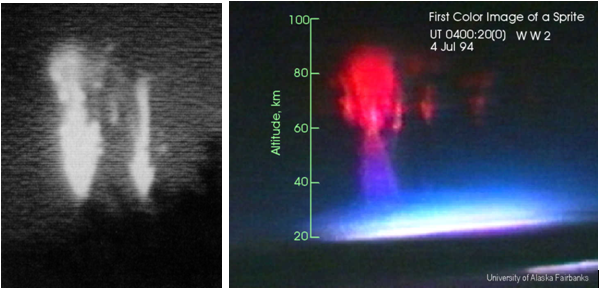
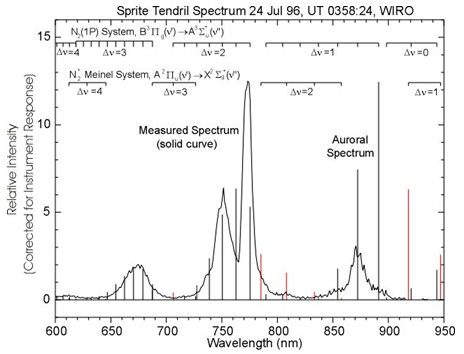

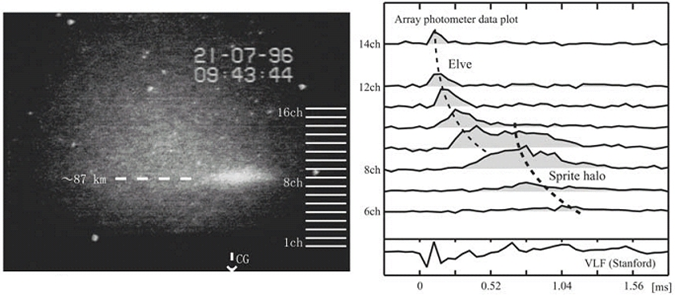
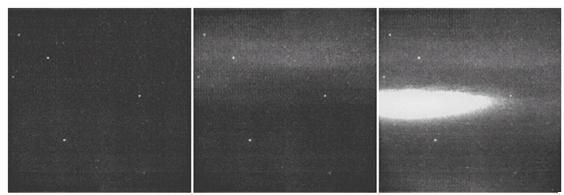
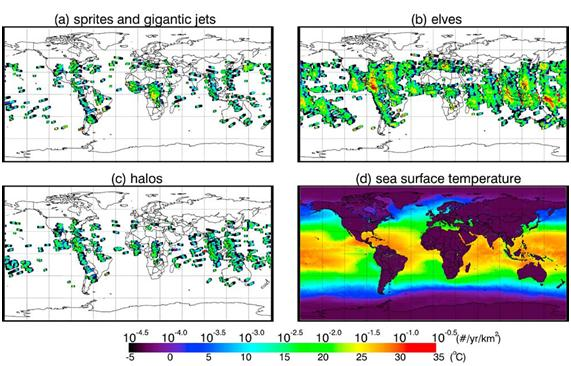
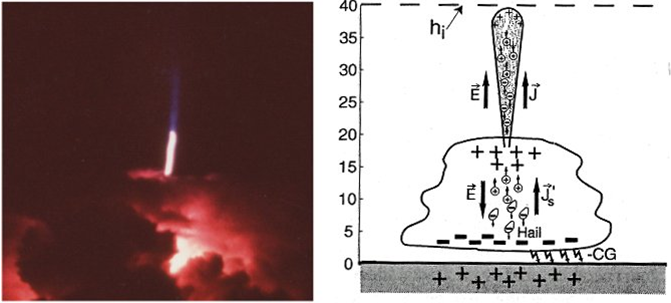
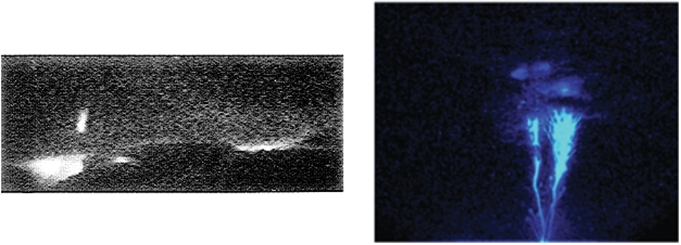

 http://elf.gi.alaska.edu/
http://elf.gi.alaska.edu/
 http://www.fma-research.com/
http://www.fma-research.com/
 http://vlf.stanford.edu/
http://vlf.stanford.edu/
 http://www.space.dtu.dk/English/Research/Projects/ASIM.aspx
http://www.space.dtu.dk/English/Research/Projects/ASIM.aspx
 http://smsc.cnes.fr/TARANIS/
http://smsc.cnes.fr/TARANIS/
 http://taranis.latmos.ipsl.fr/
http://taranis.latmos.ipsl.fr/
 http://www.electricstorms.net/wiki/COBRAT_BALLOON_CAMPAIGN
http://www.electricstorms.net/wiki/COBRAT_BALLOON_CAMPAIGN